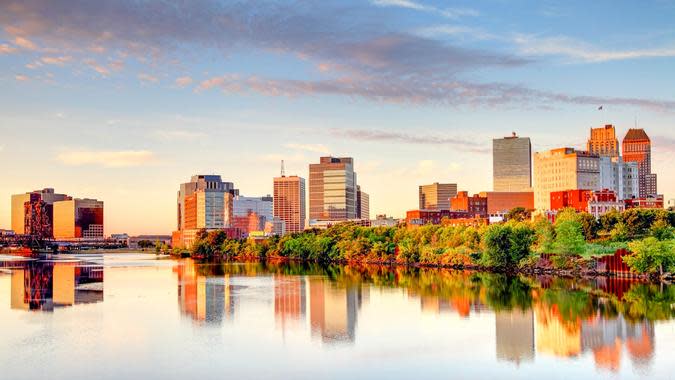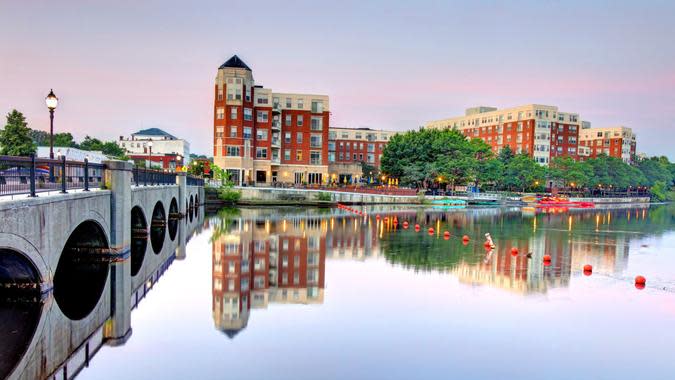The Hardest States for an Affordable Retirement

Most seniors live out their days on a relatively fixed income that's a combination of retirement savings and Social Security payments. As it's hard to increase your income once you stop working, the best way to stretch your dollars is to live in an affordable area. Fortunately, the U.S. is such a diverse country that there's a wide range of places to live, and the cost differential from state to state can be surprisingly large. In some cases, simply moving to the state next door could add thousands of dollars to your annual retirement budget. This can be a significant amount for many retirees, so it's worth looking at the data to see what your options are -- and which states you should perhaps avoid.
Retirement at Any Age: Get Retirement Tips That Fit Every Stage of Life
Find Out: 7 Surprisingly Easy Ways To Reach Your Retirement Goals
To help in that regard, GOBankingRates sourced data from the Missouri Economic Research and Information Center for all 50 states regarding the cost of groceries, healthcare, utilities, housing, transportation and miscellaneous items. The top 10 most expensive states are listed below in reverse order, based on the total cost of living.

10. Maine
Maine's utility costs run just a hair below the national average, and its grocery and healthcare costs come in just a few percentage points above average. As with most states on the "bottom 10" list, housing is the biggest culprit, running 26.6% above the national average. The state's overall expense index is just 116.9, however, meaning for some retirees the benefits of living in the state will justify its slightly above-average expenses.
Live Richer Podcast: Unexpected Ways Losing a Spouse Can Affect Your Finances and Retirement

9. New Jersey
New Jersey's healthcare costs come in 3.5% below the national average, helping to keep its overall cost index at a not-too-exorbitant 118.6. In fact, with the exception of housing costs -- which run a significant 41.9% above the national average -- costs in categories like groceries, utilities, transportation and miscellaneous costs are relatively manageable, running from just 3.1% to 12.4% above national norms.

8. Oregon
There are two main bugaboos for seniors trying to stretch their retirement dollars in Oregon. The first is housing, which runs 44.3% above the national average. But transportation is also a huge expense in Oregon. In fact, the state has the dubious distinction at having the highest transportation costs in the country, coming in at a whopping 32.6% above the national average. Costs in all other categories in the state are much more modest, running from 2.2% to 8.5% above average.

7. Maryland
Maryland's housing prices are 62.7% above the national average but perhaps surprisingly it has some of the lowest healthcare costs in the country. Only Kentucky, Arkansas and Puerto Rico score lower than Maryland's 88.1 index, meaning costs in the state run 11.9% below the national average. The state's overall cost index of 125.1 means you can expect your total expenses across the board to be about 25% higher than the nation in general.

6. Alaska
With the exception of Puerto Rico, Alaska has the highest average utility expense among any of the American states and territories, with an index of 148.4. It also takes the title in terms of healthcare expenses, which run a whopping 52.9% above the national average. Overall, costs are fairly high across the board, with groceries, housing and miscellaneous expenses at 35%, 20.3% and 20.1% above the national averages, respectively.

5. New York
New York is an interesting case because although many associate Manhattan and its high costs with the state in general, the reality is that it has lots of lower-cost regions. In fact, on a statewide basis, utility costs are actually just a touch below the national average, and other costs are only about 5%-18% above average. However, housing is expensive on average in the state, running more than 90% above national norms. This is enough to kick the statewide expense index up to 136.8.

4. California
California has a reputation for being a high-cost state, and indeed it ranks No. 4 in terms of the MERIC data. But many costs, such as healthcare, groceries and miscellaneous expenses, are only about 10%-16% above national averages. Housing is the biggest problem in California when it comes to costs, which come in about 93% above the national average. Utilities and transportation also run about 25% and 29% above national norms, respectively. Put it all together and the Golden State will cost you about 40% more than average.

3. Massachusetts
If you're looking to live in Massachusetts, your housing costs will be about double the national average -- and that's only the beginning. Overall, the cost of living in Massachusetts is nearly 50% more than the national average, with utilities, transportation, healthcare and miscellaneous costs running about 18%-30% above the national average. The most affordable costs in Massachusetts are groceries, coming in at "only" 12.8% above average.

2. District of Columbia
The District of Columbia may be small, but it's mighty when it comes to the cost of living. In fact, D.C. residents endure a higher cost of living than any state but Hawaii, with a cost index that's 54.5% above the national average. Housing costs are the biggest culprit here, running 2 1/2 times above average, while miscellaneous costs are 17.1% above average. There are still some pockets of value in D.C., however; healthcare costs, for example, actually run 2.6% below average.

1. Hawaii
Hawaii may be the Aloha State, but it also has a well-founded reputation for being an expensive place to live. The data from MERIC bear this out, as the state has by far the highest cost-of-living index in America. Housing is one of the primary culprits, as it reaches more than three times the national average across the country. But it's hard to avoid high costs in any category in Hawaii, with even the most affordable expense -- healthcare -- reaching more than 20% above the national average. Overall, you can expect your costs to run about 90% above the national average if you choose to live in Hawaii, making it the hardest state for retirees to afford.
More From GOBankingRates
Here's How Much Cash You Need Stashed If a National Emergency Happens
Looking To Diversify in a Bear Market? Consider These Alternative Investments
This article originally appeared on GOBankingRates.com: The Hardest States for an Affordable Retirement
